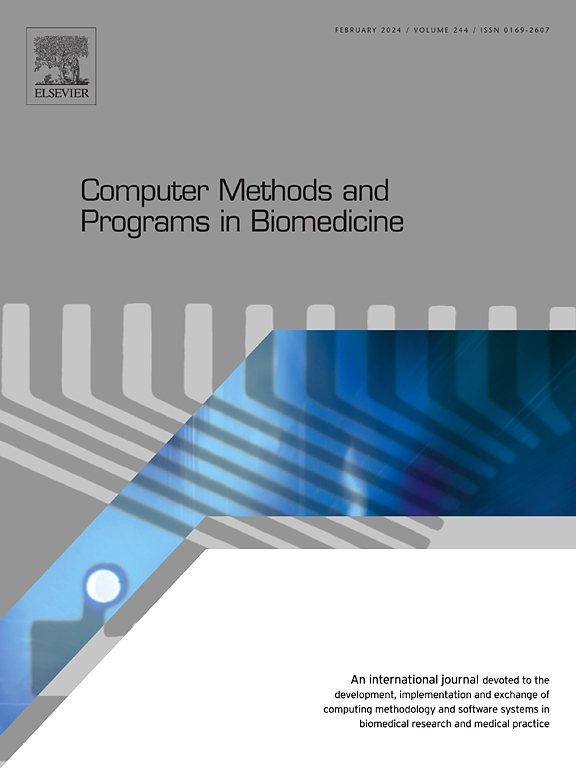Non-experimental rapid identification of lower respiratory tract infections in patients with chronic obstructive pulmonary disease using multi-label learning
IF 4.9
2区 医学
Q1 COMPUTER SCIENCE, INTERDISCIPLINARY APPLICATIONS
引用次数: 0
Abstract
Background and Objective
Microbiological culture is a standard diagnostic test that takes a long time to identify lower respiratory tract infections (LRTI) in patients with chronic obstructive pulmonary disease (COPD). This study entailed the development of an interactive decision-support system using multi-label machine learning. It is designed to assist clinical medical staff in the rapid and simultaneous diagnosis of various infections in these patients.
Methods
Clinical health record data were collected from inpatients with COPD suspected of having a LRTI. Two major categories of multi-label learning frameworks were integrated with various machine learning algorithms to create 23 predictive models to identify four categories of infection: fungal, gram-negative bacterial, gram-positive bacterial, and multidrug-resistant organism infections. The predictive power of the individual models was tested. Subsequently, the model with the highest comprehensive performance was selected and integrated with SHAP technology to construct a decision support system.
Results
Three-thousand-eight-hundred-one subjects participated in this study. LP-RF recorded the highest overall performance, with a Hamming loss of 0.158 (95 %CI: 0.157–0.159) and a samples-precision of 0.894 (95 %CI: 0.891–0.896). The developed diagnostic decision support system generates predicted probability output for each infection category in a specific patient and displays the interpreted output results.
Conclusion
The developed multi-label decision support system enables effective prediction of four categories of infections in patients with a history of COPD, and has the potential to curb the overuse of antimicrobial drugs. This system is highly explainable and interactive, providing real-time support in the simultaneous diagnosis of multiple infection categories.
求助全文
约1分钟内获得全文
求助全文
来源期刊

Computer methods and programs in biomedicine
工程技术-工程:生物医学
CiteScore
12.30
自引率
6.60%
发文量
601
审稿时长
135 days
期刊介绍:
To encourage the development of formal computing methods, and their application in biomedical research and medical practice, by illustration of fundamental principles in biomedical informatics research; to stimulate basic research into application software design; to report the state of research of biomedical information processing projects; to report new computer methodologies applied in biomedical areas; the eventual distribution of demonstrable software to avoid duplication of effort; to provide a forum for discussion and improvement of existing software; to optimize contact between national organizations and regional user groups by promoting an international exchange of information on formal methods, standards and software in biomedicine.
Computer Methods and Programs in Biomedicine covers computing methodology and software systems derived from computing science for implementation in all aspects of biomedical research and medical practice. It is designed to serve: biochemists; biologists; geneticists; immunologists; neuroscientists; pharmacologists; toxicologists; clinicians; epidemiologists; psychiatrists; psychologists; cardiologists; chemists; (radio)physicists; computer scientists; programmers and systems analysts; biomedical, clinical, electrical and other engineers; teachers of medical informatics and users of educational software.
 求助内容:
求助内容: 应助结果提醒方式:
应助结果提醒方式:


